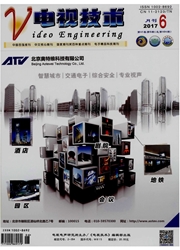

 中文摘要:
中文摘要:
移动用户目标系统(MUOS)作为未来美军军事通信转型的重要组成部分,能够满足美军全球范围高性能战术卫星通信能力的需求。在深入描述了MUOS系统构架、信息流的基础上,分析比较了MUOS与地面蜂窝WCDMA移动通信系统,从信道传输特性、环路传输时延以及信道衰落形式等方面指出了两者之间的差别。从空中接口、RAKE接收、抗干扰、功率控制和无线电资源管理等方面着重分析了MUOS系统的关键技术,对比地面蜂窝WCDMA移动通信,指出了MUOS在相应技术上做的改进和区别。最后从空间段、地面段和用户段三个层面归纳了MUOS系统目前发展现状,总结其未来研究趋势,并指出我国卫星移动通信发展应借鉴的地方。
 英文摘要:
英文摘要:
As an important part of the U.S. future military communication transformation, the Mobile User Objective System(MUOS) can satisfy the U.S. military demand of global tactical communication with high performance. On the basis of thoroughly describing the structure of MUOS and its data flow, MUOS is compared with the terrestrial celluar WCDMA system from the aspects of channel transmission characteristics, round-trip transmission delay and channel fading style, and the differences between them are pointed out. The key technologies of MUOS are analysed, including common air interface, RAKE receiving, anti-jamming, power control and radio resource management. The improvement and difference of the related technologies applied in the new system are pointed out with comparison to the terrestrial celluar WCDMA communication. Finally, the current development status of MUOS is summarized from the aspects of space segment, ground segment and user segment. What's more, the further research trends of MUOS and what we can learn from it are presented.
 同期刊论文项目
同期刊论文项目
 同项目期刊论文
同项目期刊论文
 期刊信息
期刊信息
